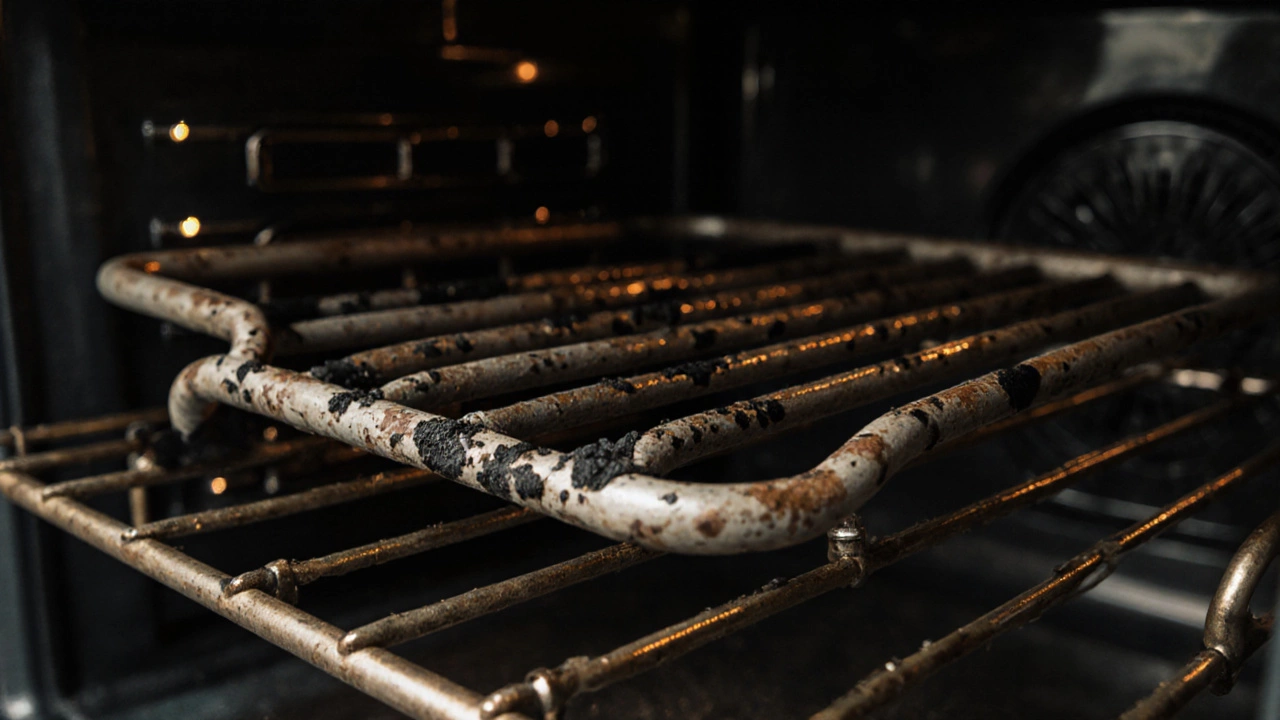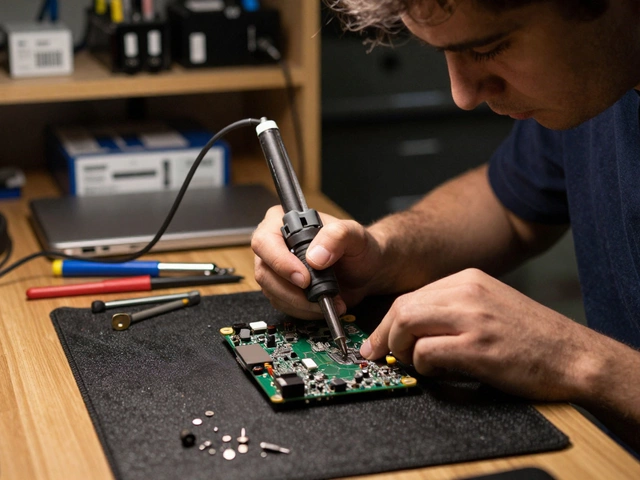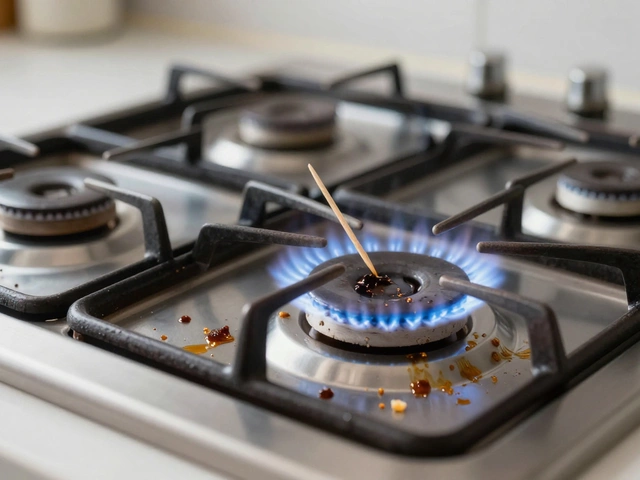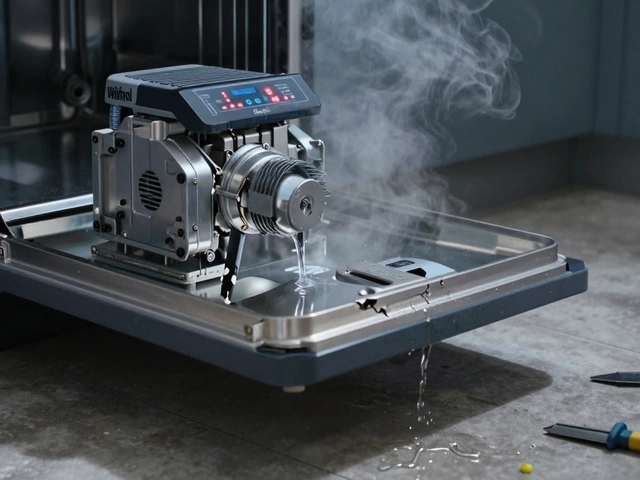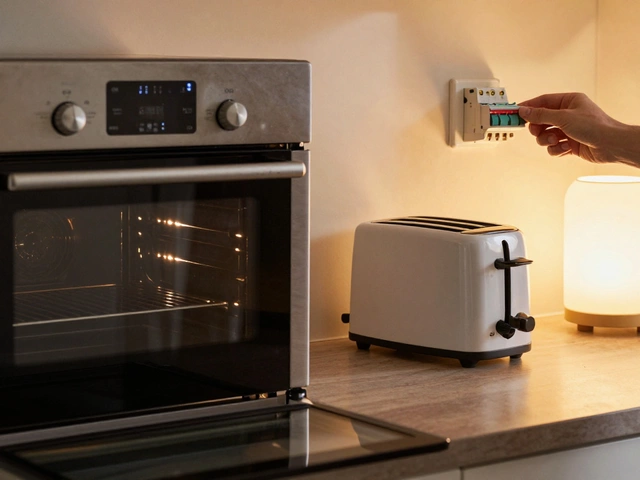Oven Fault Diagnostic Tool
Select Symptoms
Recommended Solution
If your electric oven isn’t heating right, takes forever to preheat, or shuts off randomly, you’re not alone. These aren’t rare quirks-they’re classic signs of wear that show up in nearly every household with an electric oven over five years old. You might think it’s time to replace the whole thing, but in most cases, it’s just one simple part failing. Knowing what to look for saves money, time, and a lot of frustration.
Heating Elements Are the Most Common Culprit
The heating elements-both the bake element at the bottom and the broil element at the top-are the most likely parts to go bad. They’re made of metal coils that expand and contract every time the oven turns on and off. Over time, that stress cracks the metal, causes hot spots, or breaks the connection entirely.
Signs of a bad bake element? The oven won’t heat up at all, or only heats unevenly. You might see visible damage: black spots, bubbles, or the element glowing only in patches. A broken broil element won’t stop the oven from working, but it’ll ruin your ability to broil anything. If you’re roasting chicken and the top stays pale while the bottom burns, the broil element is probably dead.
Testing is simple: turn off the power, remove the back panel of the oven, and use a multimeter to check for continuity. If the meter reads zero or infinity, the element is dead. Replacement costs between $30 and $80, and it’s a DIY job for most people with basic tools.
Thermostat or Temperature Sensor Failure
Even if the heating elements work fine, your oven might still be cooking wrong. A faulty thermostat or temperature sensor causes the oven to misread the internal temperature. You set it to 350°F, but it’s actually running at 400°F-or worse, it’s only at 280°F.
Common symptoms: food burns on the bottom but stays raw on top, cookies spread too much, or bread doesn’t brown properly. You might also notice the oven cycling on and off too often, or staying on long after it should have shut off.
Most modern electric ovens use a temperature sensor probe, usually a thin metal rod near the back wall. If it’s bent, covered in grease, or corroded, it gives false readings. Cleaning it with a soft cloth and isopropyl alcohol sometimes fixes it. If not, replacing the sensor costs under $50 and takes less than 20 minutes. Older models with mechanical thermostats can fail too-those are harder to test and usually need professional replacement.
Door Seal Issues Are Often Overlooked
A broken door gasket doesn’t stop the oven from turning on, but it wastes energy and ruins cooking results. The rubber seal around the door keeps heat in. When it cracks, shrinks, or pulls away from the frame, heat escapes. That forces the oven to work harder to reach temperature, which increases your electricity bill and shortens the life of other parts.
Test your seal: close the door on a dollar bill. Try to pull it out. If it slides out easily, the seal is weak. You’ll also notice the oven door getting hot to the touch-even when it’s not running. Or you might hear a hissing sound when the oven is on, which means hot air is leaking out.
Replacing the gasket is cheap ($15-$40) and easy. Just peel off the old one and press the new one into the groove. Don’t use glue. The seal is designed to snap in place. A good seal can cut your preheat time by 30% and make your baking more consistent.
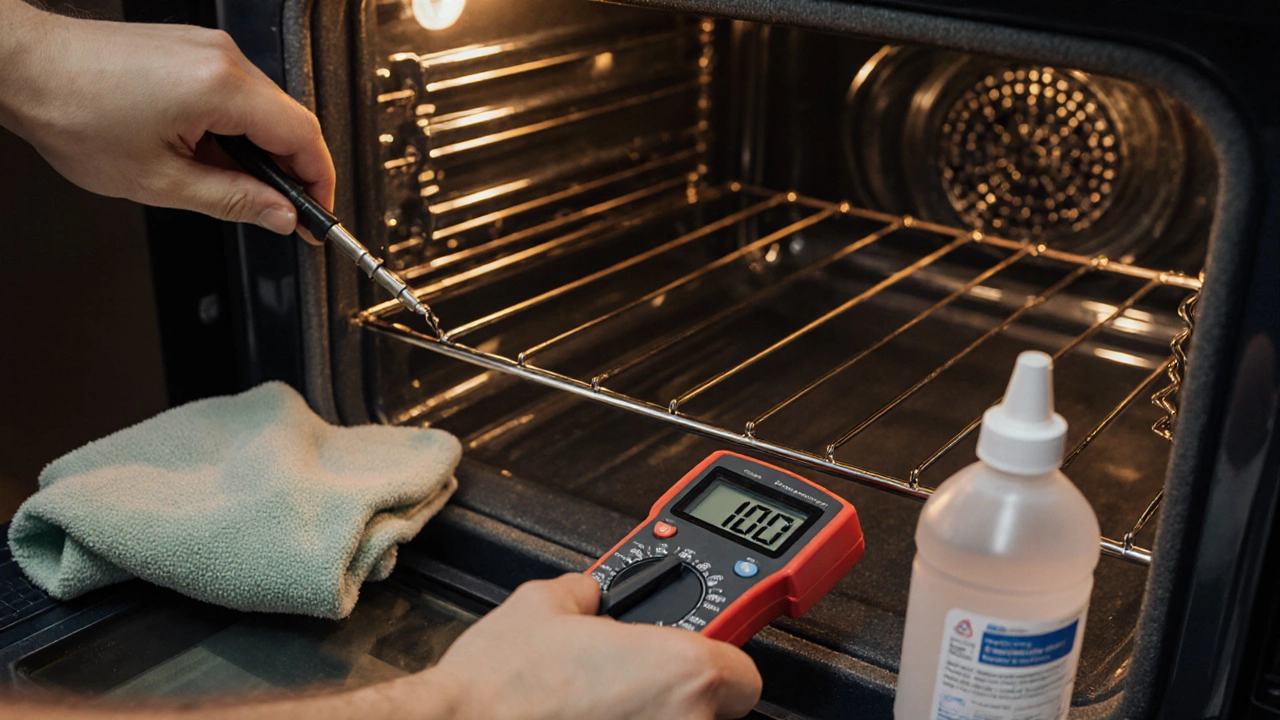
Control Board and Relay Problems
When the oven display flickers, buttons don’t respond, or the oven turns on and off randomly without any pattern, the control board is probably the issue. This is the brain of the oven. It tells the heating elements when to turn on and off based on the temperature sensor’s feedback.
Control boards fail because of power surges, moisture from cleaning, or just old age. You might see error codes like “F1,” “E1,” or “PF” on the display. These codes vary by brand, but they usually point to a board malfunction.
Unlike elements or sensors, you can’t test a control board easily without specialized tools. If you’ve ruled out the heating elements, sensor, and door seal, and the oven still acts up, the board is the likely cause. Replacement costs $150-$300, and it’s not a beginner job. If your oven is over 10 years old, it might be smarter to replace the whole unit.
Igniter and Relay Switch Failures (in Older Models)
Some older electric ovens-especially those made before 2010-use a mechanical relay switch instead of a solid-state control board. These switches click when they turn the heating elements on and off. Over time, the contacts inside wear out and stick open or closed.
Signs: the oven stays on even after you turn it off, or it won’t turn on at all. You might hear a loud clicking sound from the back of the oven every few seconds, even when it’s not in use. This is the relay trying-and failing-to make contact.
Relay switches are usually found behind the control panel. Replacing them requires disconnecting power and working with live wires. Unless you’re experienced with electrical systems, this is a job for a technician. The part itself costs $40-$70, but labor can push the total over $200.

Power Supply and Wiring Issues
Electric ovens need 240 volts to run. If your home’s circuit breaker trips every time you use the oven, or if the oven runs weakly, the problem might be in the power supply.
Check the breaker panel. If one leg of the double-pole breaker has tripped, the oven gets only 120 volts instead of 240. That means it heats slowly or unevenly. Resetting the breaker might fix it temporarily, but if it keeps tripping, the wiring or the oven’s internal power cord could be damaged.
Also, inspect the power cord where it connects to the back of the oven. Loose, burnt, or frayed wires here are fire hazards. If you smell burning plastic or see discoloration, turn off the power and call a professional. Don’t try to repair this yourself unless you’re licensed.
When to Repair vs. Replace
Here’s a quick rule: if the repair cost is more than half the price of a new oven, walk away. A basic electric oven costs $500-$800. So if you’re spending $300 or more on parts and labor, it’s time to upgrade.
Also consider age. Ovens last 10-15 years. If yours is older than 12, even a simple fix might not be worth it. Newer models have better insulation, smarter sensors, and energy-saving modes that cut your electricity bill by 20% or more.
But if your oven is under 8 years old and the issue is a $50 sensor or a $60 element, fix it. You’ll get years more of reliable use-and you’ll avoid the hassle of installation and adjusting to a new control layout.
Prevention Tips to Extend Your Oven’s Life
- Don’t spray oven cleaner directly on the heating elements or sensor. Use a damp cloth instead.
- Wipe up spills quickly. Burnt-on food can drip onto the elements and cause premature failure.
- Use the self-clean function sparingly. High heat degrades the gasket and electronics over time.
- Check the door seal once a year. A quick pull test takes 10 seconds and can prevent bigger problems.
- Install a surge protector for your oven. Power spikes from storms or appliances can fry the control board.
Electric ovens are built to last, but they’re not immune to wear. Most problems are simple, cheap, and fixable. You don’t need to replace your oven just because it’s acting up. Know what to look for, test the basics, and you’ll often fix it yourself before calling a technician.
Why is my electric oven not heating up at all?
The most common reason is a failed bake element. Check for visible damage like cracks or discoloration. If it’s broken, replace it. Other causes include a blown thermal fuse, a faulty thermostat, or a tripped circuit breaker. Test the element with a multimeter first-most of the time, that’s the issue.
Can a dirty oven cause heating problems?
Yes. Heavy grease and food debris can insulate the temperature sensor, making it read the wrong temperature. This leads to under- or over-cooking. Clean the sensor with a soft cloth and isopropyl alcohol. Avoid harsh cleaners on the sensor-it’s delicate. Also, burnt spills near the heating elements can cause hot spots and premature failure.
My oven turns on but doesn’t reach the right temperature. What’s wrong?
This is usually a faulty temperature sensor or a weak door seal. Use an oven thermometer to verify the actual temperature. If it’s off by more than 25°F, the sensor is likely bad. Also, test the door seal with the dollar bill trick-if it slips out easily, replace the gasket. Both fixes are inexpensive and easy.
Is it safe to use an oven with a broken door seal?
It’s not dangerous in the short term, but it’s inefficient and risky. Heat escaping means higher electricity bills and longer cook times. Over time, the extra strain can damage the control board or heating elements. Also, hot air leaking near the control panel can warp plastic parts. Replace the seal as soon as possible.
Why does my oven keep shutting off during cooking?
This usually means the oven is overheating and triggering a safety shutoff. The most common cause is a faulty temperature sensor sending wrong readings. Other causes include a failing control board, a blocked vent, or a dirty fan in convection ovens. Check the sensor first-it’s the easiest fix. If that doesn’t help, the control board may need replacement.
